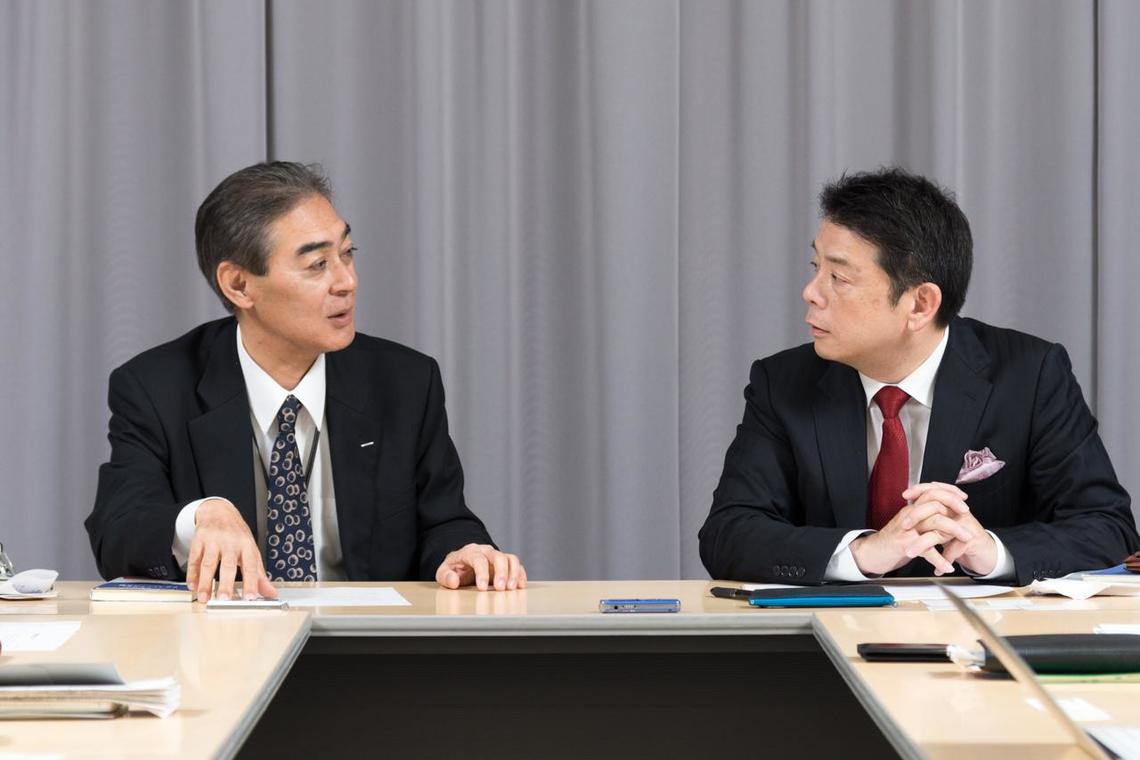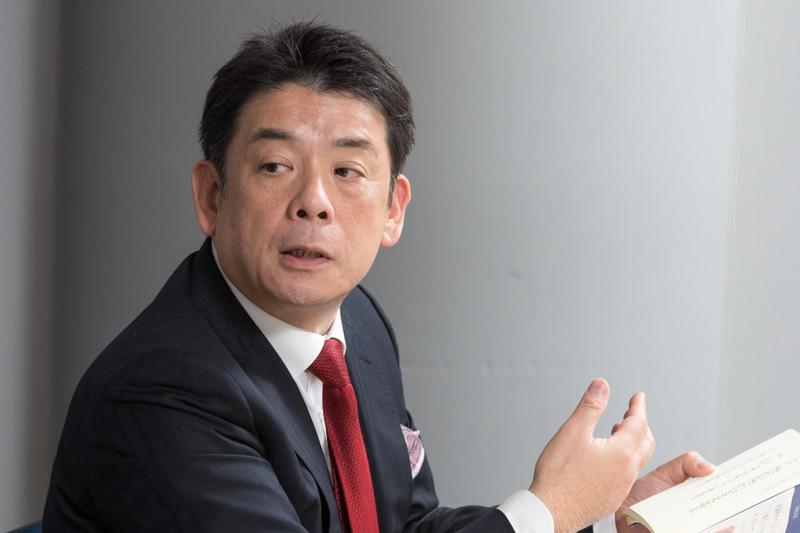[Special Interview (Part 2)]

From left: Mr. Murai, Mr. Ueda
An Olympics Where We Consider "Our Own Gold Medal"
Murai: We touched on the Tokyo Olympics briefly in Part 1. To welcome tourists from around the world, physical infrastructure like signage is already being developed. But to help foreigners understand Japan's intangible "omotenashi" hospitality, we'll also need to develop the soft aspects going forward.
Ueda: That's crucial. Japan's period of high economic growth began around the time of the 1964 Tokyo Olympics, when the Shinkansen opened and the country became an economic powerhouse. Back then, we were still rebuilding after the war, and it was an era where everyone sought material resources. This time, the Tokyo Olympics are different. Precisely because we've entered an era of "heart resources," "omotenashi" is essential. The national mindset has changed too. Last time, each person thought, "I'm going to succeed too," overlapping their personal dreams with the Olympics and working relentlessly. But this time, because it's an era of the heart, if we can guide people to embrace the Olympics as their own, to consciously ask themselves, "What is my personal gold medal in life?" then I believe the whole country will become energized.
Murai: I see. The ideal is for the Olympics to be something not just for Tokyo, but for all of Japan to rally behind. By holding up "your own personal gold medal," newspapers can uncover and share the "heart resources" found in everyday life through both articles and advertisements... It sounds dynamic and challenging.
Ueda: It's precisely because it's difficult that it's interesting. We can leverage the continuity and depth inherent in newspapers as a medium to introduce the roots of the power of words preserved in local communities, or to feature companies actually practicing the spirit of hospitality in regional areas... It's about how to express the intangible.
Murai: How far can we push the limits of what words can convey through the power of language itself? Perhaps the mission of newspapers going forward is to convey the world of human communication, the world of hospitality, and how to truly move people.
Ueda: This might be a slight digression, but when I joined Mitsukoshi, there was this incredible woman around 70 years old who was a true pro at hospitality. She told me a story: during the war, when no one knew when the draft notice might come, customers kept coming to her to entrust her with their most important possessions. They trusted her, knowing she treated everyone with sincerity and dedication, believing she would safeguard their belongings. When she finally retired, they spread out the items still in her care. Each one was wrapped in newspaper from that era. Newspapers, preserved as physical objects, offer unexpected encounters with the events and atmosphere of their time. There's a unique value in stumbling upon something left there, something you didn't actively seek out.
Murai: You're absolutely right. As you know, since the 2000s, newspaper circulation has been declining due to the rise of the internet and young people turning away from newspapers, creating a tough situation. However, information discovered in this way sticks in your memory and has a big impact. Durability is also one of the strengths of newspapers as a medium.
Creating Points of Contact with Young People
Ueda: You mentioned young people turning away from newspapers. Young people who don't read newspapers are getting their information online, right? What's important to understand here is that information you actively seek out doesn't necessarily take you beyond your own frame of reference.
Murai: That's certainly true. Ten or twenty years ago, reading the newspaper was seen as a form of "intellectual armament," wasn't it? You'd skim through various articles in the morning, and when you actually spoke with customers, the topics would often expand based on articles you happened to see when opening the paper.
Ueda: Information you seek out yourself is ultimately limited to the scope of your own thinking, making it harder for unexpected insights to emerge. In that sense, newspapers are a medium where, when you casually glance at the stockpiled content, different interpretations can spring up from it.
Murai: It would be ideal if print and digital could coexist and thrive together, or at least find a good compromise. Beyond newspapers as a single medium, we're also advancing initiatives exploring new ways of information dissemination using the "newspaper company's capabilities" – that is, the diverse functions possessed by the entire newspaper company. Newspapers reach middle-aged and older readers, while young people are said not to read them. But by increasing opportunities for people to meet face-to-face through events and projects, we must convey more of that spirit of hospitality to the younger generation...
Ueda: That's wonderful. Talented young people are already starting to uncover the "heart resources" in the regions where they were born and raised. These young people with their antennas are revitalizing local communities. I think newspapers should definitely shine even more of a spotlight on such young people.
Murai: I see. Where to focus that spotlight is also a challenge.
Newspapers are a medium that captures "heart ratings"
Ueda: What astonished the world after 3.11 (the Great East Japan Earthquake) wasn't just the tsunami damage itself, but the actions taken by the Japanese people at that time. Every year as 3.11 approaches, newspapers report on what that spirit truly is and where it comes from. I believe there's no doubt that the expectation for a spirit of "hospitality" – always considering others – was a key factor in Tokyo being chosen for the 2020 Olympics.
Murai: One year after the disaster, we ran a joint project with four local newspapers in the affected areas (Kahoku Shimpo, Fukushima Minpo, Fukushima Minyu, Iwate Nippo). We agonized over how to communicate while truly understanding the feelings of the disaster-stricken regions. Here too, the challenge was how to realistically disseminate information while maintaining that spirit of hospitality and keeping our hearts with the victims.
Ueda: That event fundamentally changed something within the Japanese people, didn't it? We also took on a role toward the world in terms of "emotional resources." Thinking about it, there seems to be no limit to what newspapers can do in this regard.
Murai: Newspapers are often seen as media that unilaterally convey information gathered by the company to readers. But perhaps what's required of newspapers going forward is a higher level of information dissemination and communication—including the cultivation of "emotional resources"—that involves understanding readers' feelings and translating them into articles.
Ueda: That sounds like it would make for more compelling reading. If television is about ratings, I think newspapers are about "heart ratings." It's about how much we can move readers' hearts through the continuous use of words to delve deeply into and convey one important thing.
Murai: That's right. While there are various metrics for measuring a newspaper's effectiveness, the key lies in how deeply newspapers and newspaper advertisements can connect with their audience through their expression. I've learned so much today. Thank you very much.









